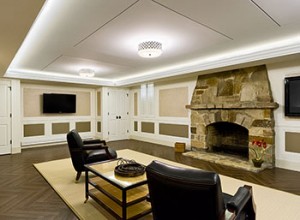 Understanding air movement, air exchange, humidity, and the proper alignment of building materials is important. Many basements are damp, musty, leak air, and have little natural light but most of this can be overcome with the proper understanding of building science and safety considerations. The bottom line is that it’s senseless to spend time and money finishing a basement if water or moisture will ruin the work or cause mold to grow.
Understanding air movement, air exchange, humidity, and the proper alignment of building materials is important. Many basements are damp, musty, leak air, and have little natural light but most of this can be overcome with the proper understanding of building science and safety considerations. The bottom line is that it’s senseless to spend time and money finishing a basement if water or moisture will ruin the work or cause mold to grow.
As a lifetime drywall contractor I have hung more than my share of drywall in basements. For years I would just hang and tape some moisture resistant drywall and be on our way. In 2009 I became a building performance analyst and a year later a green home verifier. I now realize that I need to spend more time thinking about solving the moisture/water problem first and incorporate construction techniques that work together to prevent moisture from moving into unwanted areas. By their nature, basements have naturally higher moisture levels than above grade spaces.
Look at the complete picture. Each step affects the next. When dealing with a moisture/water problem first eliminate the source, then the pathways and then install resistant materials. Understanding building science is very important. The practical purpose of building science is to provide predictive capability to optimize building performance and understand or prevent building failures. When creating living space in a basement the failures could involve moisture intrusion, combustion appliance safety, air quality, and energy efficiency.
Moisture intrusion: If a moisture problem is discovered, the moisture problem has to be solved.
Identify the cause. A wet or damp basement must be dealt with before any construction gets started. 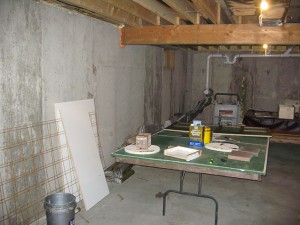
- Condensation (Also called sweating): condensation shows up as water droplets, wet spots, or puddles on basement floors and walls. It happens when moist, warm air hits cool foundation walls or un-insulated cold-water pipes, dampening carpets, rusting appliances, and turning the basement clammy. To tell if walls are damp from exterior water or condensation from humid interior air, tape a 2-ft. square sheet of plastic to the masonry below grade. If moisture collects on the front of the plastic, it is condensation.
Solving condensation problems:
a. Insulating: Insulate surfaces where condensation is likely to occur, such as cold water pipes and ductwork. Installing continuous insulation along the foundation wall will help prevent air from cooling and reaching its dew point (see sidebar below). Having a continuous air barrier at the same location will also help.
b. Air sealing: Because air movement can carry potentially moist air into walls and ceilings caulking and foam sealing any gaps in the building envelope is a must
c. Dehumidifier: Install a dehumidifier to remove excess moisture from the air. For continuous dehumidifying connect the unit(s) collection reservoir to a drain.
2)Capillary action, (wicking): If moisture collects on the backside of the plastic after a few days, then water is wicking through the foundation wall from outside. Water can move through solid concrete. The basement should be treated the same as if it were leaky. If there is regular seepage or water puddling after storms (even once every few years), the problem has to be fixed permanently before finishing. The moisture may be present because of runoff or subsurface sources.
|
SIDEBAR: Understanding Dew Point: Warm air can hold more moisture that cold air before becoming saturated. Danger is when warm air that has a high relative humidity leaks into wall or ceiling cavities toward outside surfaces which are cooler. As the air cools the capacity to hold moisture is reduced. The dew point is the temperature when the moisture turns back into liquid form. When all this happens there is now real water in the assembly that can cause real damage .
|
3) Runoff: The water most often comes from rainfall and melting snow. Even a small storm can trigger a flood of water because of the square footage of the roof. Once the water accumulates around a foundation, it works its way inside through cracks, joints, and porous material. Rainwater or melted snow that isn’t routed away from the house is a common cause of basement moisture. Runoff percolates through porous topsoil and then stops at the compact soil near the base of the foundation. Accumulated pressure forces the water through gaps or cracks in walls and footings. This can also lead to movement through porous walls by capillary action as mentioned above.
Solving Runoff Problems:
a. Proper grade: If the ground near your foundation slopes toward the house you may need to grade the slope away from it to move as much water as possible away from the foundation. Grade the slope at least one inch vertically for every one foot of horizontal for at least four feet.
b. Gutters: Clean gutters and make sure that they are sloping in the proper direction with no low sections. Install an extension for the downspout to redirect the runoff away from the foundation. A four-foot extension would be ideal if space allows.
C. Permeable materials: Hav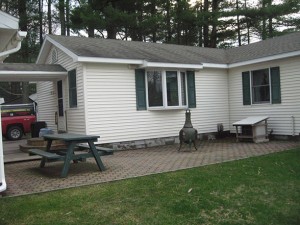 cing less solid surfaces on the property near the house will reduce the likely hood of runoff water reaching the foundation where it could accumulate.
cing less solid surfaces on the property near the house will reduce the likely hood of runoff water reaching the foundation where it could accumulate.
4) Subsurface sources: In tougher cases, the problem is rising groundwater, which may even be fed by an underground spring. The water could also come from rainfall or melting snow which may be more seasonal. Groundwater is by far the most difficult water source to deal with. If the wet basement symptoms act like runoff, but occurs all the time it is probably caused by high groundwater.
a. Foundation sealing: If water infiltration is minor, inspect the interior walls and seal all seams and caulk cracks and holes in the foundation with a polyurethane masonry product. For larger cracks or gaps use hydraulic cement. When water infiltration is more extensive exterior waterproofing will be far more effective than interior waterproofing, but is more costly to accomplish so is typically done when problem is severe enough so that outside foundation drains have to be installed. The exterior foundation can be waterproofed and/or an insulation board installed at the same time.
b. Footing drains, sump pumps, drainage planes: For water that can’t be eliminated or diverted, second best is to capture it at the outside perimeter of the foundation just below floor level and drain either to daylight or to sump pump. The best approach from the interior is to collect the moisture in a French drain, connect it to a sump, and pump it out. A French drain is a bed of stone that has replaced the soil around the interior perimeter of the basement just below the floor. A sump pump will at least ensure it gets out of the house quickly and efficiently. I have worked in a lot of basements that have a channel in the actual concrete around the perimeter. Water that attempts to enter from along the perimeter either through the wall or up from below will flow in this channel and enter a sump pit.
CAZ (combustion appliance zone)AREA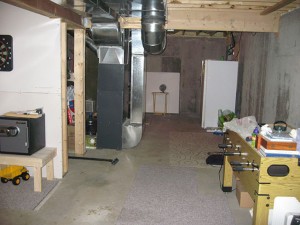
Combustion appliances such as furnaces or boilers and hot water heaters often use the air from inside the home for combustion. This air often comes from cracks in the basement walls and gaps and openings along the rim joist areas on the basement. So care must be taken when reducing this available air. The appliance may be struggling for air and the exhaust gases may have trouble exiting through the chimney. Don’t want to hide the appliance in a small closet or seal it in an area that has been sealed for sound control either. A combustion safety test is recommended before the basement remodeling work starts as well as during and after the work is complete. Consider sealed combustion appliance or bring in required level of air with an air exchange system. Safety first is a must when dealing with potentially life threatening gases.
Air Quality
Air movement: When air mo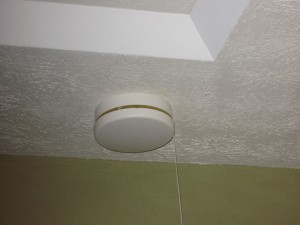 ves through wall and ceiling cavities it often carries moisture which can cause damage. Air infiltration is the flow of outdoor air into the indoors which is accompanied by an equal amount of exfiltration which is air flow out of the conditioned space. Let the air exchange and ventilation systems control the air movement in the basement. A properly functioning home incorporates air tightness and good ventilation. “Build Tight and Ventilate Right”
ves through wall and ceiling cavities it often carries moisture which can cause damage. Air infiltration is the flow of outdoor air into the indoors which is accompanied by an equal amount of exfiltration which is air flow out of the conditioned space. Let the air exchange and ventilation systems control the air movement in the basement. A properly functioning home incorporates air tightness and good ventilation. “Build Tight and Ventilate Right”
Because of the confined space of a basement an air exchange system may be desired. This will vent out stale air and replace it with fresh air. Installing a ventilation system sized for the space is often a better choice because they recover heat from the exhausted air that is used to warm the replacement air. Units can be purchased that also work as a dehumidifier (a real plus for potentially damp basements). An exhaust fan such as a bathroom vent fan can be purchased that can be set to run continuously at a desired CFM. The fan vents the stale air which has to be replaced with fresh air. Ports can be installed away from the exhaust fan that allow outside air to enter. This is a simple air exchange system.
Energy efficiency
Increasing the air tightness, insulation value, and closing off areas while converting the basement to living space can create a basement moisture problem where there was none before. Changing the flow of air, heat, and moisture can upset the equilibrium of the basement. Sometimes the flow (movement) is what is keeping things dry.
Insulation
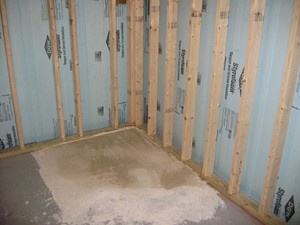 Keep the higher R value insulation to the outside. If using foam panels they should be a continuous surface, from floor to ceiling (sealed on all edges). The rim joist area should also be insulated and connected with the wall insulation. A common practice is to have the best insulation and the air barrier next to the outside concrete wall. This prevents warm air from reaching the cooler wall. The closest the air can get to the concrete wall is the warm insulation surface. If a vapor retarder is used it should be next to the warm side. NOTE: A vapor retarder such as a poly membrane is not necessarily an air barrier. Time must be spent sealing any edges and splices with a good quality flexible caulk. I prefer to make the drywall an air barrier and prime it with a vapor retarding primer when a vapor retarder is required.
Keep the higher R value insulation to the outside. If using foam panels they should be a continuous surface, from floor to ceiling (sealed on all edges). The rim joist area should also be insulated and connected with the wall insulation. A common practice is to have the best insulation and the air barrier next to the outside concrete wall. This prevents warm air from reaching the cooler wall. The closest the air can get to the concrete wall is the warm insulation surface. If a vapor retarder is used it should be next to the warm side. NOTE: A vapor retarder such as a poly membrane is not necessarily an air barrier. Time must be spent sealing any edges and splices with a good quality flexible caulk. I prefer to make the drywall an air barrier and prime it with a vapor retarding primer when a vapor retarder is required.
When a customer has concerns about water whether it is just high humidity or bulk moisture mold will be high on their list of concerns. Mold need water, oxygen, and nutrients to grow. We have already discussed ideas about elimination the moisture. Air movement within the structure will reduce the amount of oxygen available for mold growth, so air sealing will be helpful. Construction with mold resistant products where possible will help reduce the food source necessary for mold growth.
Framing
Materials: I have seen all kinds of materials used to frame out basement wall and soffits. Unless jack posts are being taken out most wall are not structural support walls so light gauge steel is a good choice. The metal is inorganic so it is not a food source for mold and metal does not absorb moisture. I suppose that if it were exposed to moisture often enough the metal would corrode. There is even a vinyl stud that is marketed for basement remodeling because it is mold, moisture, and corrosion resistant. The metal or vinyl studs are also lightweight compared to wood so getting the materials into the basement is easier. If you are going to use wood a treated plate is usually installed along the floor.
|
SIDEBAR: |
This Photo on left shows treated wall plate that is caulked in place. The contractor did a lot of caulking and sealing to help prevent any water from entering into the living space. If that much moisture was behind the wall cavity then the moisture problem was never really corrected. But the caulking and sealing was still a good idea because it helped make a more airtight assembly.
Floor
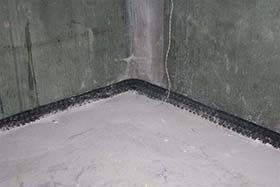 It may be necessary to create a barrier on the floor as well. The existing concrete floor should have a vapor barrier under the concrete. But in case moisture was to appear on the floor it is a good idea to have a material in contact with the floor that provides a barrier and space where the moisture can drain away. The 2 ft by 2 ft interlocking wood panels work because they
It may be necessary to create a barrier on the floor as well. The existing concrete floor should have a vapor barrier under the concrete. But in case moisture was to appear on the floor it is a good idea to have a material in contact with the floor that provides a barrier and space where the moisture can drain away. The 2 ft by 2 ft interlocking wood panels work because they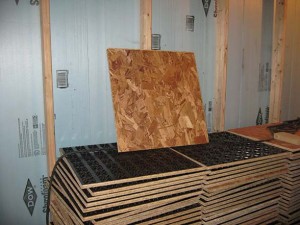 have a plastic bottom that holds the wood away from the concrete and also allows any water to drain away. If an additional layer of concrete is poured over the old, a similar idea to the wood flooring is a plastic membrane that is under the concrete to allow water to drain away in a similar manner.
have a plastic bottom that holds the wood away from the concrete and also allows any water to drain away. If an additional layer of concrete is poured over the old, a similar idea to the wood flooring is a plastic membrane that is under the concrete to allow water to drain away in a similar manner.
Use mold and moisture resistant products where practical. Tile, stone, PVC products (such as Trim-Tex Vinyl Cornerbeads), and other inorganic products will help reduce damage should moisture problems occur even after all the preventative work done. All this was done in case there is that freak storm or plumbing break. Basements are the lowest point in a home so even if a second story bathroom pipe burst the water will end up in the basement.
Drywalling
Location: Even if the block or concrete wall appears dry it is not recommended to attach the drywall directly in a basement. Poor adhesion, moisture and mold problems could occur. The same criteria can be used if a plaster finish is desired.
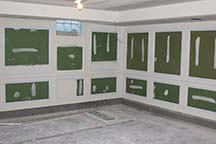 Mold resistance Drywall: Why not use mold resistant drywall? Most if not all drywall manufacturers sell a mold resistant drywall that is also moisture resistant, so a long as it is not exposed to contaminated water it won’t grow mold. If the goal is to not have any mold growth in the assembly then all materials should be mold resistant. Mold need water, oxygen and nutrients to grow. Basements are often damp so moisture resistant drywall always seemed like a no brainer and now there is mold/moisture resistant drywall. There is even paperless drywall, fiberglass mat joint tape, and mold resistant joint compound. All these products are designed to increase the longevity of the assembly which is built in a damp environment.
Mold resistance Drywall: Why not use mold resistant drywall? Most if not all drywall manufacturers sell a mold resistant drywall that is also moisture resistant, so a long as it is not exposed to contaminated water it won’t grow mold. If the goal is to not have any mold growth in the assembly then all materials should be mold resistant. Mold need water, oxygen and nutrients to grow. Basements are often damp so moisture resistant drywall always seemed like a no brainer and now there is mold/moisture resistant drywall. There is even paperless drywall, fiberglass mat joint tape, and mold resistant joint compound. All these products are designed to increase the longevity of the assembly which is built in a damp environment.
Decorative ideas: Because of the lack of natural light and lower ceilings the spaces can be easily brightened with light colors and decorative drywall work. Quite often basements have a lot of interesting angles and stepped down and up areas. Trim-Tex decorative corner beads and drywall layers with beads can be an inexpensive way to add some accents. Take advantage of the soffits and boxed in areas to create some decorative accents
Paints
As mentioned earlier the prime coat on exterior wall can be a vapor retarding primer. Paint and decorate using light colors to brighten up desired areas. An occasional accent surface can be a paint or decorative surface that has a sheen but to help establish a comfortable inviting feeling I suggest using flat paints and textures.
Recessed lights are common in basements because of lower ceiling heights but they essentially become spot lights. Wall sconces or concealed LED light strips that light across surfaces can offer a nice upgraded look.
Conclusion
Why do we even have basements? In cold areas of the country the house foundation has to be dug down below the frost line so why not go a few more feet and have a full basement. When I was a kid my parents house had a full basement. That was where the huge wood and oil furnace was located, and of course all that ductwork. We had the 60 gallon hot water heater. There was an area where my mother had her summer kitchen where she did all the canning and of course where she kept all the canned vegetables and jams. We had two large storage freezers where more food was stored. And of course every fall we would pack in about 9 full cords of fire wood. And oh yes the washer and dryer was all in the basement. I would say we needed the basement. I have done a lot of energy audits in the past few years and most basements I see are just full of “junk”. These basements are conditioned spaces that can be put to much better use than storage. So move the junk to a storage unit and for much less money than building an addition, use the same footprint as the house itself thus creating some quality living space.
Copyright 2013:Myron R. Ferguson
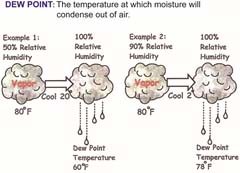
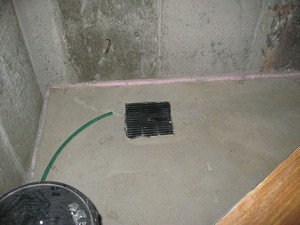
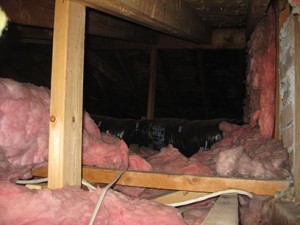
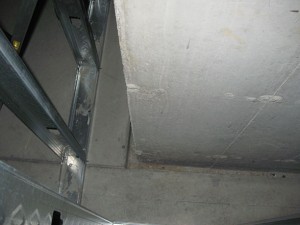
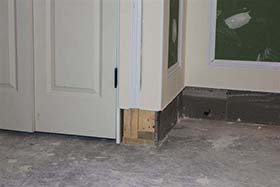
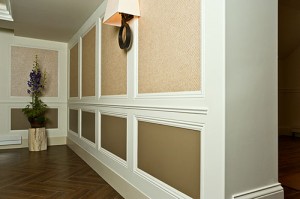
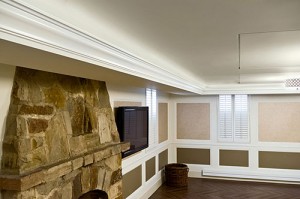
I very much liked this post on basement considerations in construction. We have a property in Rhode Island that is very old. In 2004 we did a major project on building up the basement. The contractor literally wheel barrowed the dirt out of the basement to finish it, there have been mold problems to the point now that there is substantial black mold behind the drywall. A contractor who looked at it said our contractor made a mistake in not using mold resistant drywall. Is mold resistant drywall a standard in the industry for finishing a basement? Also we just learned that contractor never got permits for the project even though it was agreed that he would handle all the plans and permits etc.
Thank you for post, I learned a lot. The contractor who did the job says there is no such thing as mold or moisture resistant drywall, you have proven to me that he is wrong.
Some contractor or people call it green board and by code any wet area like bathrooms or basements you have to use the purple board I have remodeled and lost one house to black mold it is very dangerous and that contractor needs to fix it . And when do so do not drag it through your house the mold will spread throught your house .
Mold/moisture resistant drywall should have been used, but that would be just one piece of the puzzle. The mold would just grow on the other organic materials behind the wall. Mold needs moisture, oxygen, food, and a warm temperature to grow. Removing just one will prevent the mold from growing.
My guess is that your house is not very air tight. A brief explanation is that warmer air is exfiltrating through your attic or through bathroom or kitchen vents or even the dryer. The replacement air is coming in through the basement. Cracks and gaps in the foundation and along the rim joists allow moist air to enter. Because the drywall is not airtight and the foundation is not airtight the moist air just needs a food source to grow.
I think that before finishing a basement such as yours an energy audit should have been done. The blower door test would help locate leaks and could also be used to confirm proper air sealing. Air sealing and adding insulation along with the other moisture preventative measures mentioned in the article would have reduced the likely hood of mold growth
Hello Myron, Is there a company in York, Pa that you could recommend to help me with my basement moisture issues. I do most of the construction and upkeep in my home but I have heard so many different opinions regarding the best solution to removing moisture in a basement with combustion appliances that I am completely lost and don’t know who to call that can give me facts and not just opinions.
Please help!
Tina
Hi Tina,
To deal with the mold concerns I would contact a mold inspector. They are trained to determine if there is a problem and to determine how it got there and how to prevent it from recurring. I would look for one who has knowledge of construction as well. I just looked up mold inspectors in Pa and found a lot of potential help
Getting a home energy audit is always a good idea especially if work is done tightening up the house. The audit will help you determine how leaky your house is which could be the reason for the mold/moisture concerns.
go to http://www.bpi.org for list of qualified professionals
All the best,
Myron
We recently smelled an odor when we turned on our air conditioner, it has been raining a lot in GA lately. Anyway, we went downstairs to our unfinished basement and noticed the one corner of the exposed wood was damp (in the shape of a narrow small Christmas tree). The smell was worst downstairs than through the AC vents and we noticed several pieces of clothing discolored/grayish. here were no visible puddles of water, or pools of water inside or outside.
Our house sits near a lot of trees and we didn’t notice a slope towards the house. We just discovered this tonight and will go investigate the outside perimeter in the morning but where would you suggest we start to ensure the least amount of damage both to our house, our belongings and most importantly to us and the kids?
Thanks in advance.
Signed…extremely concerned
Hi Gale
The mold could just be caused by condensation in the wall. The basement walls may not be insulated or air sealed at all which could lead to the moisture problem. To deal with the mold concerns I would contact a mold inspector. They are trained to determine if there is a problem and to determine how it got there and how to prevent it from recurring.
I would look for one who has knowledge of construction as well. But if the inspector also does the corrective work make sure you check references because there could be a conflict of interest situation.
It also may be a good idea to get a home energy audit. The audit will help you determine how leaky your house is which could be the reason for the mold problem. Air could be infiltrating or ex-filtrating through your basement walls. That air carries moisture which condensates.
All the best,
Myron
Hey Myron, I’ve really enjoyed your site. Very informative and I’ve spent several hours googling my issue so you might be the right expert. I live in Long Island New York, basements in my area tend to be humid.
My house is about 80 years on a poured foundation. I’ve done everything I can to reduce moisture coming into the basement and have made significant improvements to the exterior penetration.
I run a dehumidifier that runs a fair amount. Basement is finished: batt insulation, greenboard sheetrock, on metal studs. No other types of moisture/vapor seal. Studs are set off from the walls about 6 inches (for the most part).
I have vinyl flooring, drywall, paint, trim, caulk. I had been battling the occasional spider-cricket that make their way into the basement – so I had been really sealing everything up real good and tight outside the house and in the finished interior.
Here’s my question: I’m wondering if the foundation is breathing alright? Its not as if the foundation walls are wet – but with the amount the dehumidifier runs – there definitely had always been a fair amount of humidity getting into the room. But once everything is sealed up and the finished space has no air gaps (aka bug gaps) – can/how-does humidity come out of the foundation, into the interior and eventually into the dehumidifier? I’m sure some even permeates thru the drywall (though I’ve read that drywall+paint is a vapor retardant). How can I rest assured that somehow seeping water vapor makes it way out and isnt festering behind the drywall. I almost feel as if I need to put a passive vent in the drywall to open the flow of air – but I don’t want to make assumptions. Thanks much for any guidance.
I think you would only have to worry if the space behind the airtight walls you built around the foundation are somehow connected to the living space above which would cause air to pass in or out through those paths.. In other words the room you are standing in when in the finished basement is nice and airtight from the foundation walls. But did you leave paths that connect the ceiling areas with the foundation wall? These paths can connect with living space upstairs or even directly to the attic. Or do the foundation walls somehow connect with the wall above through drilled electric holes or duct work?
Basements of course are mostly below ground and don’t have as good of air circulation as upper floors, and the temperature is usually lower so they often have higher humidity’s when the weather is warm.
I live in a house where my main living space is dug into the hill and the front opens up to ground level. The house is built with ICF’s and is very airtight. I don’t have air-conditioning and my house is nice and cool. We seldom open windows on hot summer days but we do run a dehumidifier most nights in the warmer weather.
I really dont know if foundation walls connect into living space above. Its an old house, generally pretty loose, so I’d doubt if it didnt somehow. But I’ve been unclear – my understanding is that drywall is not adequate to allow the vapor to get from behind the wall into the main room (to be dried out by the dehumidifier). I was thinking if its a good idea to just put some vent registers in the wall to encourage some air flow out from behind the walls. But for all I know – this is a bad thing.
Hello,
Great site. I recently had a company analyze my basement. We have mold on the walls & he recommended an inorganic lining on the walls tucked into the drainage system along the floor. He also advised we need an industrial sized dehumidifier to keep air moving. The problem is I don’t have $4000 on hand for his company to complete the work. Is there any alternative for me? Our cinder clock basement is leaking through on both sides and he said that is not a big deal if we use his system as all water will go to the sump. Can I purchase any liners like this or spray the walls for bacteria? I have a 3 year old in the house and I am very concerned for his health. Thank you for your time.
-Eric
My basement has a french drain w/ sump basin which I’ve never seen any water in. I do, however, have to run a dehumidifier for moisture. My question has to do with draining the dehumidifier. I’m tired of emptying the bucket so I’m thinking about a dehumidifier that has a hose outlet for continuous draining. Do you think it’s counter productive to drain this water into my sump basin that has a basin cover on it? Or should I invest in a dehumidifier that is capable of pumping the water vertically so I can plumb it to an outside rain spout?
You can just let the dehumidifier drain into the sump drain. Attach the hose to the drain pipe if possible but make sure that if ever needed the pump can still operate properly.
After record rains this spring we have water in the basement. I have a room that is insulated and dry walled. I have cut out the first 2′ of drywall from the floor due to mold and wetness. I am thinking I should strip it to the studs because it is so damp and it may not dry out. If I do that should I insulate it again or just hang moisture proof drywall/
Remove all wet and contaminated materials. Make sure everything is dry and cleaned before covering again. Sounds like you may be thinking of not insulating because you don’t want wet insulation again or because you may be trying to create some airflow. The biggest concern is what you are doing to prevent water from entering the house again. When that is corrected then you should air seal to prevent air from entering the wall cavities and insulate to help prevent any moist air from condensing in the wall cavities. Moisture/mold resistant drywall is used in a lot of damp areas but is not really necessary if things were done right in the first place. Hope this helps,
Hello, Myron,
Thank you for a very useful information.
I bought a house less than year ago and during the installation of larger windows in the basement have found out that there is no any insulation inside the basement walls. In one of the basement bedrooms I noticed a water accumulated on the floor this summer and decided that it is time to open some walls and insulate them.
I have bought “green” dry walls and fiberglass insulated panels with a layer of a foil. Because my friend will do this project – he is a handyman, not a professional, I need to know which direction the foil side of insulation has to go – inside the house or outside. Please, advise. I also asked a contractor to install the vent taking wet air outside of the basement.
When we moved into our house 3 years ago half the basement was finished but not the other. We have had water run off in the finished part of the basement 2 times during extremely heavy rains, but never any water on the unfinished side. 2 days after the studs, drywall and insulation were put up on the unfinished side of the basement we now notice “water spots” on the floor. Could this be condensation? How do we solve this problem? We applied “waterproofing” paint to the foundation wall on the inside and the studs were not applied directly to the foundation wall so as to remain even. Do we have too much air being exchanged between the wall/insulation and foundation? We run a dehumidifier non stop during the summer down there and have to empty the bucket 2 times per day. It never smells or seems musty but now I am very concerned. Any advice you have would be appreciated.
Thanks
Jill
Hi Jill, Are there exposed water pipes in the ceiling that could have condensation that is dripping. Running the dehumidifier is good. If the moisture is originating behind the walls then it may be that the air is getting back there and reaching its dew point. The exterior walls should be sealed very tight so there is no air exchange or spaced far enough from the exterior wall and be part of the conditioned living space. The sealed foundation will help prevent moisture from entering from the outside but it will not prevent warm moist air from condensing at that surface.
Myron,
How do I seal up a well in my basment that maybe the cause of the musty smell .its a old house and has the original well still there.i have a room that is finished but is musty smelling.. what do I do
Hi Amanda, I would think you would have to have some sort of a steel cover made. Attach and seal all gaps with caulk or some tar.
Basements are usually musty. Because the humidity is high but the air is warm. And sometimes this damp air flows past cold outside wall surfaces and condenses which can cause mold to grow. Or just high humidity and absorbent materials will case mold and musty smells. Air sealing and humidity control are the answers.
All the best,
Myron
Hi Myron,
We had our basement finished a few months ago. We now have a large mold issue on all of the contents in the entire basement. We have been told to take off all the sheet rock and buy an industrial sized dehumidifier. How do you get the moisture out of the air constantly – is it only by running the dehumidifier all the time??
Thank You!
Kim
Thank you for this informative article. I have just moved into a house that has a high wood clad ceiling. Apparently in winter condensation drips off ceiling as there is a plastic membrane under the wood, between it and the tile roof. What is the best thing to do and what could I put over wood to stop this problem and also to keep it warm and dry please. Heating is by night storage heaters. Thank you for your kind reply, Julie Rainbird
Sounds like there is too much moisture in the air and it is reaching the cold surfaces and condensing. It is hard to understand exactly what your place looks like. But air sealing, insulating, and lowering the humidity is the answer. The heaters may not be vented which will dump a lot of moisture into the place as well.
Hi Myron,
I am redoing my basement and I’ve had mold problems in the past but I believe I’ve fixed the problem being a leaking window that caused the basement to flood therefore causing mold problems. At this point, I have the basement stripped down to just the foundation. Would you recommend attaching drywall directly to the concrete surface if that is possible or using furring strips or even a metal frame? I don’t want to have to deal with this mold again and by removing either a food being a wood frame or removing the oxygen for the mold through installing the drywall directly onto the wall.
Thank You!
Luke
I have a good question for you…..my house is in Michigan and was built in 2001.In the basement there is a concrete(poured walls) room with a door,this room is located right under my front concrete porch……well there is a metal panel/roofing in between the porch and the basement and the panel is rusting and is always wet.I didn’t reall notice it right away because we are never in that room……Any ideas? I don’t want to insulate over the rust but not sure how to stop it from rusting
Myron,
Thanks for this information. We have a french drain around our interior perimeter foundation in our basement. We want to finish it but want to minimise the partition thickness. Could we build our partitions directly to the foundation walls with firing strip and foam insulation or should we just build out in front of the drains? And if we build in front of the drains, how can we finish the head at the ceiling? Thank in advance.
Adrian B
Hi Adrian, As long as the basement walls have always been dry you can build the wall right against the concrete. First seal the rim joist areas so that they are airtight (even along the sill plate) Then make sure the wall is air tight as well. Make sure you isolate the wall from the ceiling so not air movement initiates from there. It there are spaces above the walls that can enter any space along the walls then either use expanding foam or block off and seal with another material such as scrap drywall. Hope this helps,
Myron
Myron– last week, my husband and I noticed moisture on the ceiling in our basement storage/sump pump room after I went in there and felt it to be humid. The home we live in is a new construction that we have occupied sine May. The sump pump room is adjacent to a media room/safe room. Both spaces lie beneath a concrete suspended slab with a garage above. We noticed the ceiling moisture just after a large rain event, so we assumed it was due to water intrusion from outside the house; however, there was no evidence of dripping onto the floor or down the walls (the moisture occurred only along the juncture of the slab and the basement wall along the wall that forms the exterior of the house). It occurred after turning on our furnace and its attached humidifier and was noticed on a day when a warm front came through, suddenly bringing temperatures up into the 60s from colder weather. The sump pump room has no direct ventilation. We noticed recurrent moisture within a few days when weather conditions were dry. My question is: does this possibly represent “sweating slab” syndrome? If so, how can we verify this as the cause of the moisture? Secondly, what would you recommend to prevent further moisture issues like this? Would a dehumidifier in the space help? Should we ventilate the sump pump room by putting a vent or louvre into the adjacent media room? We are concerned because the drywall of our media room ceiling is in close proximity to the area of observed moisture and we cannot tell if the moisture area extends all along that ceiling/wall juncture in the media room as that area lies behind the drywall. Any suggestions would be appreciated.
Thanks
Hi Jennifer, I think there is a slight gap between the slab and wall and air is either infiltrating of exfiltrating through this gap depending on the pressure differences in the house. Sealing along the junction both on the inside and outside should cure the problem. It may also be a little of the cold from the outside traveling through the concrete and causing moisture to condense when reaching the warmer temperature inside. Insulation applied to the exterior would work best but insulation could also be attached to the interior surface. Air sealing, circulating the air, and lowering the humidity will all help.
Condensation (Also called sweating): condensation shows up as water droplets, wet spots, or puddles on basement floors and walls. It happens when moist, warm air hits cool foundation walls or un-insulated cold-water pipes, dampening carpets, rusting appliances, and turning the basement clammy. To tell if walls are damp from exterior water or condensation from humid interior air, tape a 2-ft. square sheet of plastic to the masonry below grade. If moisture collects on the front of the plastic, it is condensation.
Myron
Myron,
Great site and information! I have a 70’s home built on an 8″ poured foundation. It is white, so I don’t know if it’s been painted or a waterproofing product like Drylok has been previously used. It also appears that the wall may have been scratch-coated and then painted, it’s not smooth at all. Maybe this was from the original molds, or is it something they did in the 70’s? I’d like to insulate/finish part of the basement. I’m going to install foam on the walls and then build a frame insulated wall in front of that. There is no evidence of leaking or condensation in the basement. What thickness foam should I use on the walls? Also, should I paint the walls prior with a product like Drylok, or is that mainly for block walls? It does appear that I can see a faint difference/darkening around the basement wall about 18″ from the bottom. Is this moisture pushing it’s way through the wall, or the ground water level possibly? Is this anything to be concerned with?
Thanks in advance!
Hi Andy, I would say that if you lived there for a few years and have not had any basement water problems it is safe to cover. Check outside to make sure the drainage is good around the foundation.
Use 1.5 or 2 inch extruded foam and make sure it is air sealed really well. Don’t forget to air seal the rim joint areas as well. I don’t see any harm in sealing the walls before covering.
Myron
Myron, I have a similar situation in that I have a 1940’s house where the unfinished basement/garage walls are concrete block and painted white so I am not sure if it was waterproofed. The floor has been painted gray. There are some places on the wall where it is bubbly looking and when you knock it off, it is powdery. There are also some places on the floor that have white spots. I placed cardboard boxes down there when I moved in and there is evidence of moisture but I have not seen any puddles. I do not want a totally finished living space with sheetrock the exterior walls, but would like to add a divider wall, paint the exterior walls and install some type of flooring to improve the laundry area. I have read many things on the internet about waterproofing the walls and then having water come up through the floor. We currently have a dehumidifier. Please advise.
Hi Donna, I have seen the white powdery stuff many times. In basements and on plaster ceilings. It is caused by very a very small slow leak or I think in your case through diffusion from the outside. It is very difficult to treat from the inside. I suggest you check the drainage outside the affected walls. You need to move any runoff away from the building. A dehumidifier will not really help much because I don’t think the problem is the inside humidify.
I think that if water is coming up through the floors you don’t have a very good drain around the perimeter of the foundation. On most new homes there is a drain around the outside and the inside.
Myron
Thanks for the great bit of information covered in the post – quite comprehensive and very helpful. We are in the process of buying a new construction house in Atlanta and are thinking of having the builder finish up the basement instead of us getting it done later. We have been told the foundation will be sealed from the outside and no other water/moisture barrier measures will be carried out on the interiors – drywall used will be the regular material used in the upper floors and no sealant on the foundation walls on the inside either.
The big reason we are getting the basement finished now is to roll the cost into our mortgage instead of paying out of pocket when done later and it will also be done right away before we move in and can enjoy the basement a lot longer.Btw, the basement is a daylight walk out basement where the back and half of one side will get light and is not poured concrete.
After reading through several articles and ways of sealing basement walls, I am wondering if it’s a good idea to leave it unfinished now and finish it a year or two later and just keep an eye out for foundation settling issues/cracks/moisture leaks before getting the basement finished. Eagerly waiting for your advice and helping us decide !
Hi Rao, I know you are in a relatively warm climate so you may not want any insulation under the concrete floor. But make sure you have a very good quality vapor retarder installed under the concrete. If the outside of the foundation is sealed and the grown slopes away from the house, and the basement is not below the water table then you should not get any moisture through the actual walls. I would still recommend installing perimeter footing drain on the inside of the walls with the drain going to daylight. It won’t cost much and will give you some piece of mind.
Also don’t forget to make the framed walls in the basement as airtight as possible. You want to minimize the air moving behind the walls.
Basements are often cooler and more damp than rooms above ground so you may have to control the humidity with a dehumidifier.
As far as the use of non-moisture/mold resistant drywall. I think you will be fine but if you are worried it is less than 10 cents a sq ft more than regular.
Myron
Hi –
We have six or eight inch poured concrete walls in our basement. The one corner is exposed with an entrance door. The basement is heated. Ever since the house was built (1996) in the winter, mostly cold concrete leads to walls sweating on the interior. This occurs where the wall is exposed on the outside. So I know it is not a ground moisture issue. I am trying to resolve this. On the inside I have painted the interior with Dry-Lock then sprayed the wall with a mold inhibitor then attached 2 inch XPS Owens Corning Foamular 150 R-10 foam board to the wall. I have used tape to seal the seams and spray foam to fill in any larger voids. I have also pieced in the 2 inch foam board along the rim joist and again sealed the gaps with tape or foam. I plan to build a 2×4 interior wall insulate that with fiberglass and then drywall. Right now I just have the foam board installed. This is the issue; I am still seeing intermittent moisture on the floor at the base of the foam board at the part of the wall that is fully exposed outside. Of late outside temps overnight are in the single digits. My guess is this is due to only R-10 and a very cold wall. After I build the interior wall and insulate do you feel this will be enough separation between the cold and warm to stop the wall from sweating or is my approach in trying to resolve the issue not the right one?
Thank you
Hi Greg, Sounds like you are doing things right. Before you build any walls make sure you have foam sealed and taped all gaps, especially any around the perimeter. The R value should be good after you are finished. Make sure that when you hang the drywall to also try and make that an air barrier. No warm are can reach the cold wall. If you limit the air reaching the cold wall to only the small amount that travels through diffusion you should be fine.
Hope this helps,
Myron
Hello! I bought a house two years ago. The basement has been very dry with the use of a dehumidifier near the pressure tank, then running it into the sump pump pit, about three feet.
last winter I painted the block walls white, and the floor Grey, using masonry paint from The Pittsburg paint company.
It looks and covered great. Starting along with warm weather, I am getting Sweating along the bottom two rows of block. Not a lot, but enough to wash the paint off in spots and to the touch. The strange thing is, the only wall it is “Sweating” is the garage wall, where there is no chance of back up due to poor drainage. The basement is cool
and was never a problem until I painted the walls. Is it possible the paint is causing the problem by not letting the block breath? I have notices the water pipes are sweating a bit too. I have talked to others who clam they have noticed the same problem after they painted their block walls.
Any help would be appreciated.
Brian
Hi Myron!
Wow – this is all *great* information. I think I know which way we’re going to go, but figured I would ask if I’m on the right track. My husband and I recently purchased a bi-level home in southern Indiana. We noticed right off that the vinyl plank floor in the basement had a sheen to it which was moisture. At this point, we’re figuring that’s condensation. When we start taking the paneling down in the basement bathroom, I’m sure you won’t be surprised to find out that we found LOTS of black mold. I was heart broken, because it didn’t show up in our home inspection, and that means that we can’t move in with our kids until it’s taken care of. We’re in the process of ripping out all of the molded walls and insulation – but we’re stumbling on how to make sure this doesn’t happen again. It looks like they put the (white) drywall right up against the concrete floor. Right now we’re thinking, seal the entire lower level with “red goo”, then leave a gap of about half an inch, and install green board throughout the bathroom (which also houses the washer/dryer). It looks like the walls have been built out from the exterior with studs and insulation, so I’m not much worried about that, as all the mold was located within about 2 feet from the floor, and looks to be from wicking. So, basically, do you think our plan will work?
Hi
Myron,
We have a finished basement with a clogged French drain. Water is not getting to the sump pump but backing up onto the floor from the space between the bottom of the wall and floor. The waterproof ing companies are saying new system is needed. We have a lot of ironore in our area. That is what is backing up our system.
One company will replace sysem with clean out areas, replace lower part of wall with metal studs and mold and mildew resistant finished 1/2 walls. Does that sound reasonable.
I recently moved into a split level, now that its warm out i empty my dehumidifier 2 to 3 times a day is that normal? My kids bedrooms are down stairs so im nervous about the possibility of mold growing. After reading this one of my main questions is being my hoise is a split level i have lots of windows in the basement am i supposed to always keep these closed? I believe i get humidity in the basement just from having windows open upstairs and it going down the stairwell?
50-60% humidity is common in summer basements, it should be kept at 50-55% to prevent mold growth.
Opening the window would do it too, but there’s many more sources such as water in general. concrete is pourous so it will suck some water and evaporate in the house, not uncommon just depends how much. too much isn’t good. if there is an exposed concrete area you can tape some 6 mill poly and see if water/condensation occurs on the inside, if so humidity is from the floor itself. if not then probably just from the inside….
Our basement has had moisture/leaks in the past. We think we have it under control now as there has been no leaks for over a year. However, the basement does have a musty odor. My husband closes the interior doors down there – into bedroom and bathroom, but I think they should be left open for air circulation. What do you say? We also run a dehumidifier alot in the winter and it always amazes me how much water accumulates!
Thanks! Liz in Seattle
I think air movement is good. Keep in mind that when air moves from the basement that air has to be replaced. If the replacement air is coming in from outside through gaps along the rim joists, electrical panel, dryer vent, or even cracks in the foundation moisture is often carried with this air. Just circulating the air in the basement along with the dehumidifier is a good idea though.
Myron
Ive been living in the basement with my girl
And ever since she moved and she cant breath and is very nervous and cant move for another 5 months. What is a quick solution that can solve my issue. It breaks my heart to hear her suffer. I need help please
Hi Justin, Don’t know exactly what is going on but I think an air exchange system will help. The stale air needs to be vented out and fresh air brought in. You want the replacement air to be coming in through a fresh air port and not through cracks in the foundation or from behind walls or ceilings. A building performance contractor should be able to help you out. Check out http://www.bpi.org
We bought a house,in Wisconsin, built in 1940, in what was originally a wet land. The foundation is poured and the basement was “finished”, all painted, walls insulated, paneled and floor carpeted. Until a few years ago we had no moisture problems. Then it rained a lot several times (7 inches the first time) and we had water in the basement! Since we had removed the shag carpet several years earlier and the walls were dry, it seemed the water was, and is occasionally since, coming up through the floor. “Hydraulics”, I’ve been told.
I have made sure the ground outside is well graded away from the house, replaced all the gutters with new, seamless ones
Since the walls are dry I’m thinking of cutting off the bottom few inches of paneling, furring strips and foam insulation and replacing it with vinyl. Mold is not an issue.
Any thoughts?
Hi John, Newer homes have a drain around the footings on both the outside and inside. Yours most likely does not have one on the inside and also does not have a vapor barrier under the slab.
Replacing the bottom few inches with a non-wicking inorganic material would be a good idea. Keeping the material slightly raised off the floor will also help.
Myron
I forgot to mention that I have installed a very efficient sump pump.
Great Site! I’m looking at different flooring options for my below grade basement floor. I’m concerned about preventing mold and having surface that the flooring can properly adhere to. The concrete has some discoloration indicative of moisture wicking from the ground. One area where a large rubber tile for exercise equipment existed for years revealed some mold underneath when removed. There has never been standing water or leaks. The slab is 15 years old, and we live in NH. I’m debating between using a concrete stain vs Luxury vinyl planks. If using the concrete stain, I’m wondering of a sealant would be sufficient to assure the stain works. If using the LVP, I’m debating using dricore panels or traxxshield vapor barrier then installing the LVP on top. Style is not my concern. Durability and mold are the the big issues. I would greatly appreciate any thoughts on which you think would be best, or if you have other ideas. Thanks!
Hi Mike, I really don’t know what would work best for sure. Most basements are cooler and at least somewhat damp. If moisture is coming up through the slab then I would hesitate to cover for fear of the moisture becoming trapped and causing problems.
Myron
Good morning Myron,
I had a flood in my basement due to the sump pump not working. Had a service come out and fix it…new home and builder did not install properly, cord wrapped around pump, plus bags wrapped around and tons of sand in there. He said, the ball thing was forced against the wall of the cavity not allowing it to recognize it needed to work. Something like that. Working now, doing its job, my question really evolves around drying the basement? Should i turn on the furnace fan to circulate air or buy a dehumidifier?
The additional question, if I turn on the furnace fan, I am adding to much moisture?
Thanks,
Robin
Hi Robin, I would just run fans and dehumidifier. Furnace will be pulling some air from the basement but should not hurt anything but have fans and dehumidifier on is best.
Myron
Hello Myron,
Thanks for a really informative article. I would love to get your take on my situation. I live in a 1950s ranch home with a basement that looks to have been finished in the 70s. It does not have a sump pump and is located on a slight hill (water generally drains to the deep yard and down the driveway toward the street. I live in an area with many tear downs. The ranch home next door was removed and replaced with an enormous 3 story home with deep, large basement. My house has a poured concrete foundation. 5 years ago in the Spring I noticed some water in the bedroom and tore away the paneling to find a previously patched crack below a window. I had this crack re-patched. This year I, unfortunately let my gutters go which resulted in clogged downspouts unable to send the water out to the yard (buried gutters). So water poured over the sides of the gutters and I have two new leaks in the basement. One of these allowed enough water in to soak a good amount of carpet. Neither of the newly discovered cracks had been previously patched. My basement gets cold and damp in the Summer and I empty out the dehumidifier pan every few days. In the winter it feels warm and dry. I’ve not had any water coming up from the floor as far as I can tell. I’m thinking of pulling down all of the paneling to check for other cracks, waterproofing as necessary and then remodeling with dry wall and LVT flooring. In this situation, would you dry wall or replace the paneling? Would you install a sump pump? I’m concerned about the new construction next door creating a need for more than just crack filling. And of course asking the WP companies is not always objective as they would like to sell you an expensive system.
Myron Ferguson
Apr 11 (3 days ago)
to s.knutson97, me
Hi Susan, A sump pump would drain away water in the basement that enters the sump pump hole either by channels in the concrete floor along the walls or by collecting water from under the slab. Your water may end up in the sump pump hole but may drain down the concrete walls and soak into the insulation and finish walls first. If the water is entering because of poor drainage it would be best to improve the drainage on the outside. gutters help but also sloping the ground away and making sure there are no areas where the water can pool along the top of the foundation such as under decks.
You may have to remove walls materials that have been wet and may have mold started. If dried out fast enough mold can be prevented. Mold needs a warm temperature, water and food to grow and about 48 hours to start to grow.
Hope this helps,
Myron
I also conceive thus, perfectly indited post!
You need to be a part of a contest for one of the finest sites on the net. I am going to recommend this site!
Pretty! This was a really wonderful post. Thanks for supplying these details.
Hello! I could have sworn Iíve been to this site before but after going through many of the posts I realized itís new to me. Regardless, Iím definitely pleased I found it and Iíll be book-marking it and checking back often!
Very good information. Lucky me I came across your blog by accident (stumbleupon). I’ve bookmarked it for later!
You have such a kind and also caring nature. You have a excellent capacity to believe outside package.
The quality of content on this blog is truly exceptional. The author’s writing is both informative and interesting, and their ability to provide a unique perspective on a variety of topics is truly impressive. What I appreciate most about this blog is its attention to detail and its commitment to providing well-researched and unbiased perspectives. The author has a real talent for breaking down complex ideas and making them approachable for readers of all levels. Overall, this blog is an invaluable resource for anyone looking to expand their knowledge and understanding of the world.
Your capability to impart detailed information in such
a crystal clear manner is exceptional. This message is a proof to that.
Also visit my site – Ron Spinabella
This website certainly has all the info I needed about this subject and didnít know who to ask.
An interesting discussion is definitely worth comment. I do believe that you need to write more about this topic, it might not be a taboo matter but generally people do not speak about such issues. To the next! Best wishes!!
An impressive share! I have just forwarded this onto a coworker who was conducting a little research on this. And he actually ordered me lunch simply because I discovered it for him… lol. So allow me to reword this…. Thank YOU for the meal!! But yeah, thanx for spending some time to talk about this matter here on your web page.
Oh my goodness! Impressive article dude! Thank you, However I am having difficulties with your RSS. I donít understand the reason why I can’t join it. Is there anyone else having the same RSS problems? Anybody who knows the answer can you kindly respond? Thanks!!
You make me laugh. Your hard work and also commitment are remarkable.
Good info. Lucky me I found your blog by chance (stumbleupon). I’ve saved as a favorite for later!
Having read this I believed it was really enlightening. I appreciate you finding the time and energy to put this short article together. I once again find myself personally spending way too much time both reading and leaving comments. But so what, it was still worth it!
Great article. I will be experiencing many of these issues as well..
Having read this I thought it was extremely enlightening. I appreciate you finding the time and effort to put this informative article together. I once again find myself spending a significant amount of time both reading and posting comments. But so what, it was still worthwhile!
Everything is very open with a really clear description of the issues. It was definitely informative. Your website is very useful. Many thanks for sharing!
Hello there! This article couldnít be written any better! Looking at this post reminds me of my previous roommate! He always kept preaching about this. I’ll forward this information to him. Pretty sure he’ll have a good read. Thanks for sharing!